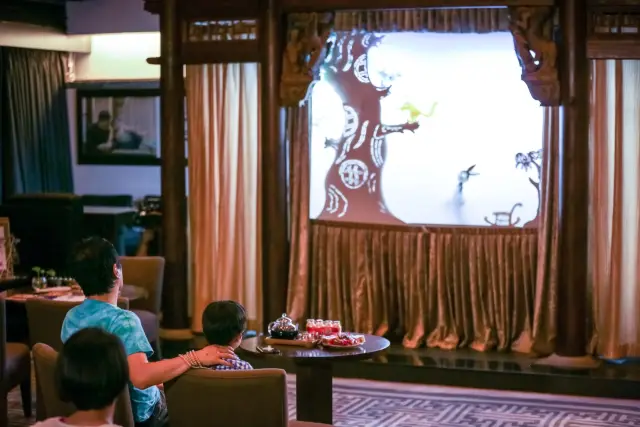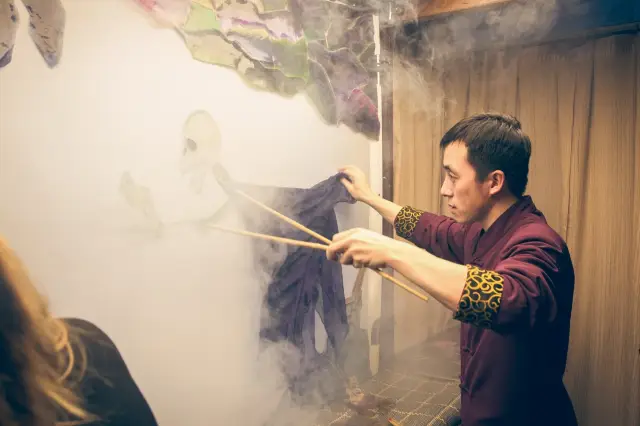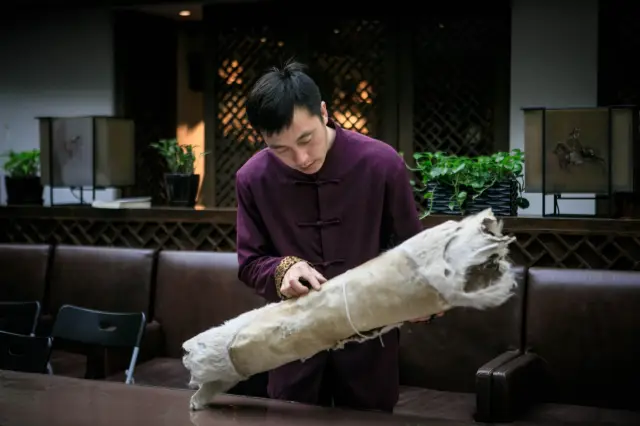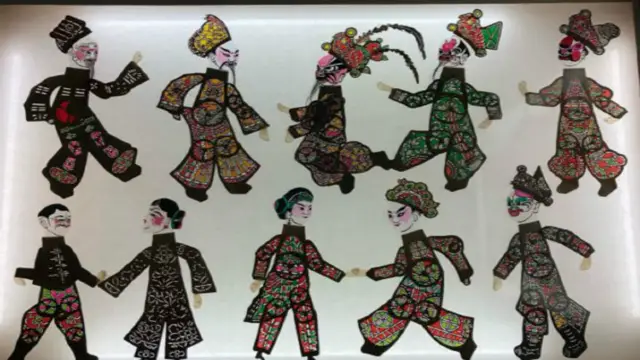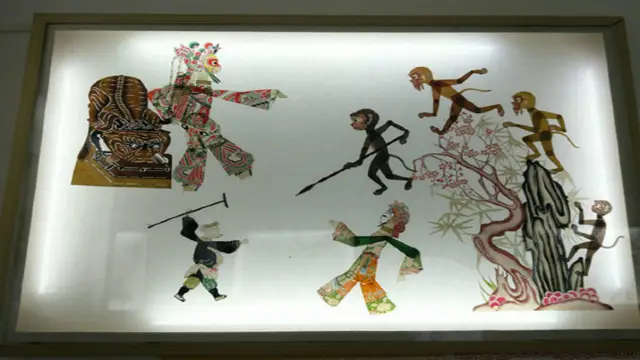2025Beijing Shadow Puppet Making|trip.com
Introduction Beijing Shadow Puppet Making
IntroductionBeijing, this historic city, invites you to step into the shadow puppet making class full of ancient charm, explore the charm of intangible cultural heritage in the alleys and alleys, and start a journey of light and shadow art on your fingertips.
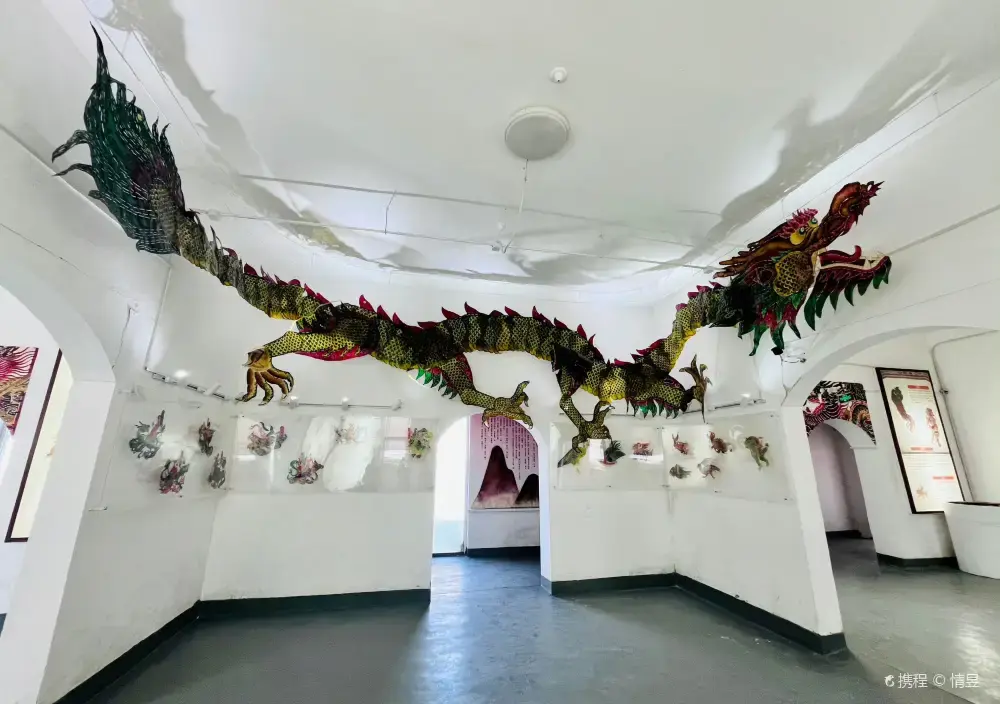
Course content with strong Beijing charm: The course focuses on Beijing shadow puppets, selects cowhide, and goes through multiple processes such as soaking, drawing, carving, and coloring. From coloring to finished products, you can create exquisite shadow puppets by hand and appreciate the essence of Beijing craftsmanship. Students make Beijing shadow puppet works by hand, take away the finished products after graduation, and elaborate on the cultural origins to continue the elegance of intangible cultural heritage. It is relatively simple to get started, which is very suitable for children to experience.

The class size is exquisite and the teaching staff is profound: The class size is small, which allows the teacher to guide wholeheartedly, and the students exchange stories of old Beijing, get inspiration frequently, and immerse themselves in the traditional atmosphere. Most of the teachers are inheritors of intangible cultural heritage, who have been in the industry for decades and are well versed in shadow puppetry. They talk about history while making and demonstrate in detail to ensure that students inherit the art with a high degree of restoration and experience traditional aesthetics.
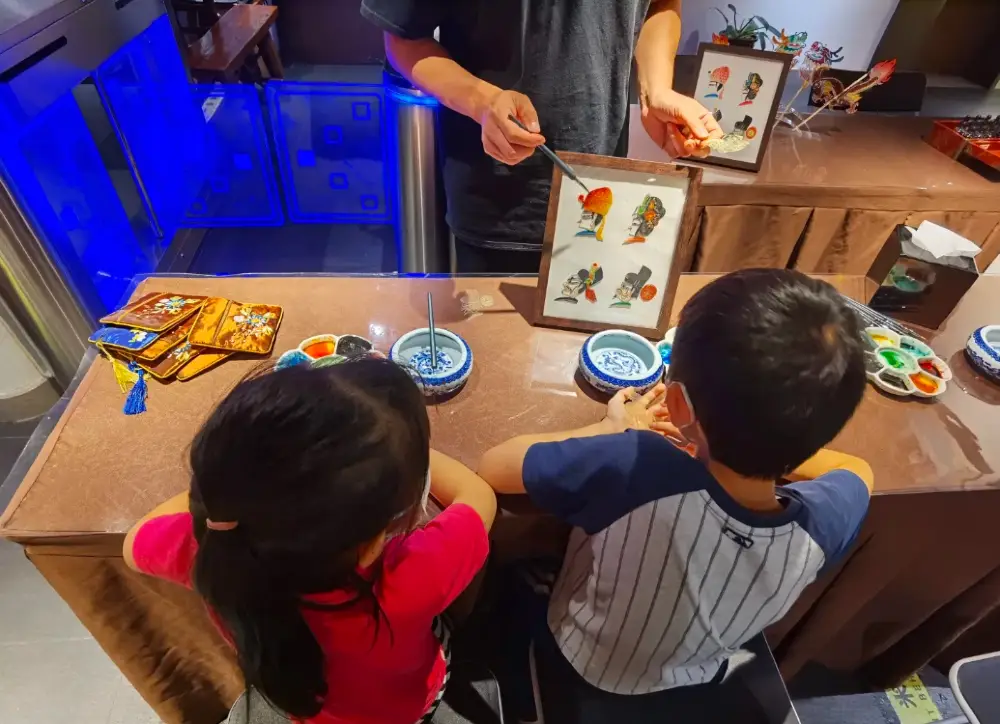
Flexible courses and traditional facilities and equipment: The course time is relatively flexible to adapt to various itineraries. The venue is often set up in a quadrangle, with an antique flavor, accompanied by the fireworks of the capital, which adds color to the creation of shadow puppets. Special carving knives and coloring pigments are all available, and traditional drying racks and leather stretching tools are ingenious, with a rich atmosphere to help creation.
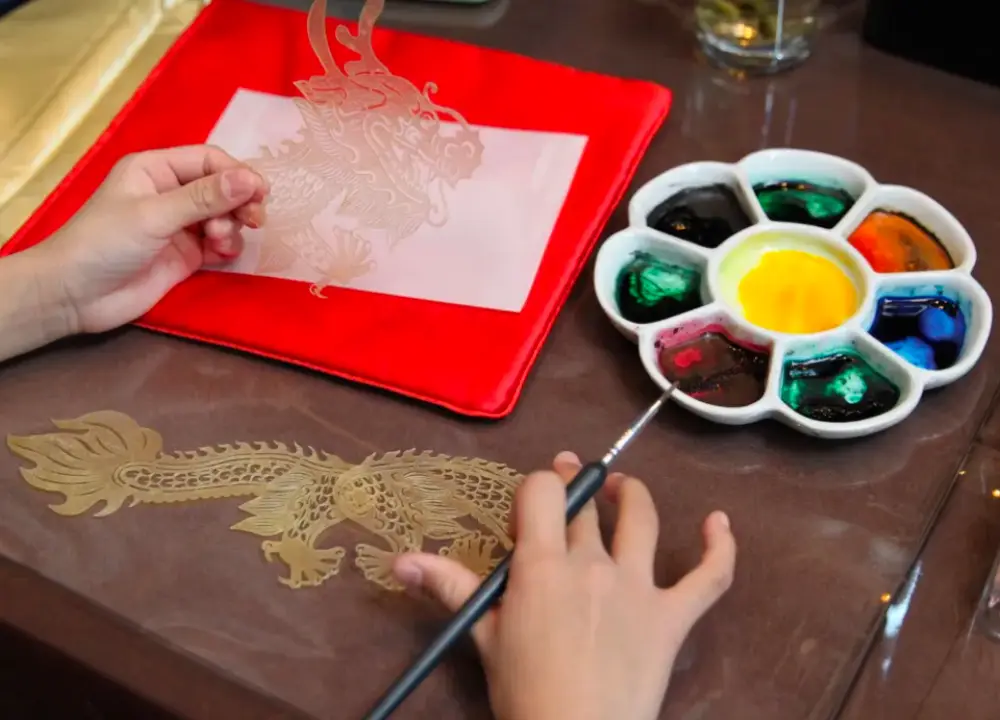
Experiencing shadow puppet making in Beijing is not only a tribute to traditional culture, but also a deep artistic exploration. In the cultural atmosphere of the capital, shadow puppet making has become a link between the past and the future, allowing participants to deeply feel the profoundness of Chinese culture.
Trip Moments Beijing Shadow Puppet Making

Lama Temple, Beijing
Where: Beijing When: August 2019 This temple is the combination of Han Chinese and Tibetan styles. It is one of the largest Tibetan Buddhist monasteries in China. It was the tallest Buddhist temple in Qing dynasty. Nowadays the temple is attractive with it’s rich colors and variety of buildings. It’s crowded most of the time but there are benches you could sit and rest for a while #beijing #mytripvlog
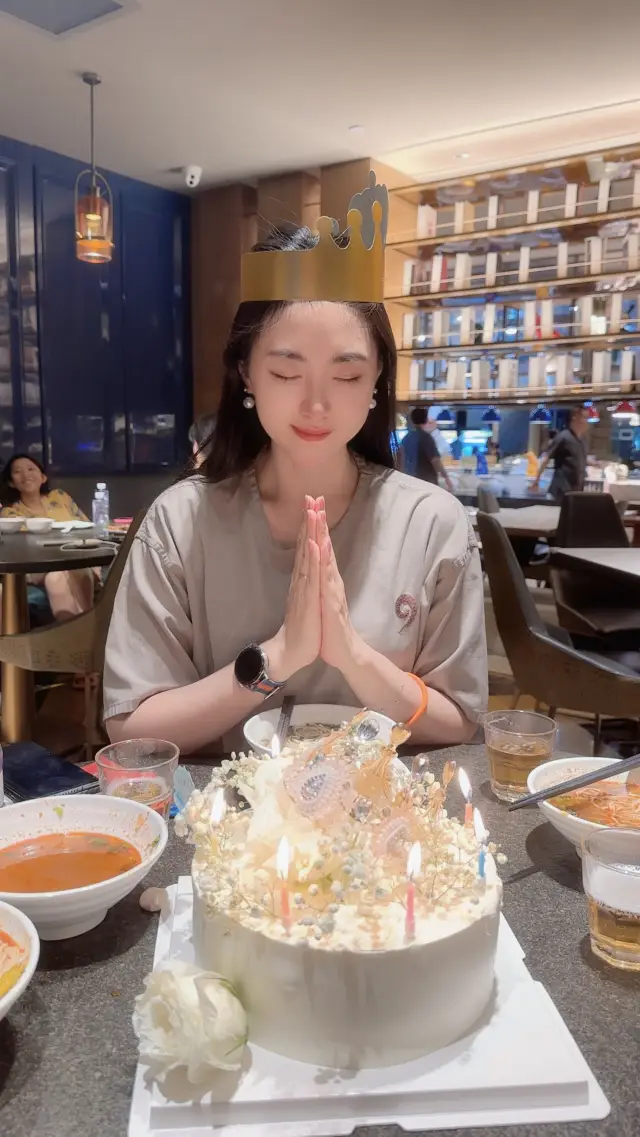
Jiuhao Hot Spring | Don't tell me you still don't know about the hot spring where you can celebrate birthdays
Don't tell me you still don't know about the hot spring where you can celebrate birthdays. Baozis👫, today I'm going to share with you a super awesome birthday guide for Beijing Jiuhao Hot Spring, making your birthday unique and incredibly memorable!🎉 📍Location: Beijing Jiuhao Hot Spring 🌟Environment: The environment here is really amazing👍, with stylish and grand decoration, and there are multiple areas with different styles for you to enjoy taking photos📷, every shot is picture-perfect. 🎡Birthday Highlights: 1. You can book a special spot in advance to become the center of attention👑. 2. The hot spring pools are super comfortable, relax your body and mind in the warm water, and enjoy the pleasant time🛀. 3. There's a rich variety of buffet food, all kinds of deliciousness to satisfy your taste buds😋, no worries about the birthday feast. 💖Birthday Process Suggestions: First, take a dip in the hot spring to relax, then change into beautiful clothes and start taking photos and checking in. When it's mealtime, enjoy the feast to your heart's content, and afterwards, chat and play games with friends in the comfortable rest area, spending a joyful time. 🥰The service is also particularly thoughtful, and the staff are very enthusiastic, which will make you feel extra warm. In short, celebrating your birthday at Beijing Jiuhao Hot Spring will definitely leave you with the most wonderful memories. Bring your friends and come together!

Stey-Wangfujing
Stey-Wangfujing Is Beautiful modern design of the room! Has a small kitchen in the room, a fridge with free water and tea. Smart home system is something that was very nice to try out too! Comfy bed, fantastic smell of expensive perfume as soon as you enter the room, good toiletries (if you don’t have a toothbrush, you should tell the staff, they will eagerly provide it but originally you are required to bring your own). Excellent location, right next to the metro station - Dengshikou, literally 5 min walk. The staff is super friendly and helpful! Although it took us quite some time (an hour or more) to register and provide all the green codes since we were traveling still at a “vulnerable” time of covid. The common area is beyond any expectations. Free coffee (amazing one!!) and tea and soda and the space is exceptionally cozy and modern. They have a huge common kitchen with a fridge, an oven (and what not) so you can easily make yourself a yummy breakfast (or even dinner) there. We absolutely loved our stay!! #uniquehotel #templeblessed #eventcelebration #art #easylife #bestislandtraveltowns#themepark#nationalpark#lakes

Gui Jie (Ghost Street)
Many restaurants are open 24 hrs, but the street is at its most lively in the evenings. This mile-long food street features more than 150 restaurants and has been serving up late night noms since the Qing Dynasty. With its iconic red lanterns, it’s difficult to miss and provides a lively night market experience that won’t break the bank. The restaurants here serve specialties from all over China, with some of the most popular being crayfish, bullfrog, hotpot, and chuan chuan (spicy skewers in soup). Our tour guide bought us here. He said this is the place where locals comes for eats and drinks after dark, thus the name. The spicy small lobsters are very good. Remember to ask for the mild spice level. It is already extremely spicy for almost everybody in my opinion. The lobsters are to be ordered in quantities of 10. #beijingtrip #urbanexplorer #cityoverlook

Yanqi resort 🏡
💁🏼♀️ If you are tired of crazy fast life of Beijing this place is a perfect choice. 📍 风车广场,Huairou district, Beijing city. 💰 I am not not sure about the price since I didn’t book. 🏃♀️ It also has a big field, you can take a walk or run or play. I saw children playing football. 🎢 No attractions nearby, no shops, very few restaurants. But it’s close to Yanqi river. You won’t be feeling bored but I think 2-3 days are enough. A well planned weekend is enough. 📸 @_ana_mee_ on Instagram #beijingtrip #huairou #chinalife #yanqi #summervacation

【Beijing China Grand Hotel】A wonderful journey!
HEY! Dear friends, I'm in Beijing! This time I stayed at the Beijing China Grand Hotel and had a wonderful journey here! Stepping into the lobby is like traveling through time, full of Chinese style. The lobby is spacious and bright, magnificent. And the background of the escalator in the lobby - the bamboo of wealth, exudes a literary atmosphere, impressive. Room section: The room I stayed in this time is an executive suite, and I was amazed by the beautiful view as soon as I entered the room. Outside the window is the magnificent city scenery, and the night lights are dazzling. Everything in the room is so delicate, the soft bed makes me feel like lying on a cloud, and the gorgeous furniture and decorations exude a luxurious atmosphere. The bathroom with separate wet and dry areas is also equipped with a bathtub, where you can rest when you are tired. Coffee Garden Buffet section: The buffet at the Coffee Garden is simply a paradise for foodies! Whether you like Chinese or Western food, it can satisfy your taste buds. Old Beijing must eat copper pot hot pot, the Nanmen hot pot here is really authentic, and the ingredients are very rich. Then, I moved on to the seafood area, where there are all kinds of fresh seafood, which simply dazzled me. The dessert area made me even more reluctant to leave, all kinds of exquisite cakes, ice cream and fruit made me feel like I was in a dessert wonderland. After this hearty buffet, I patted my belly satisfactorily, I was so happy! Summer Palace Michelin Restaurant section: At the Summer Palace Michelin Restaurant, I finally tasted the real art of cuisine. The decoration of the restaurant is full of royal atmosphere, the golden walls and gorgeous chandeliers make me feel like I am in a palace. Every dish is carefully made, delicious in color, aroma and taste. I tried their signature dish, Peking duck, every bite made me exclaim. Here, I not only enjoyed the food, but also felt the respect and pursuit of ingredients and cooking techniques. Gym section: Coming to the Beijing China Grand Hotel, how can you miss their gym? The gym is fully equipped and the environment is comfortable and spacious. The constant temperature swimming pool allows you to swim freely even in winter! In summary, the Beijing China Grand Hotel is unforgettable! If you come to Beijing, why not come here for a wonderful journey, I believe you will also be conquered by its charm!

Wonderful, relaxing stay!
My partner and I stayed at the Hotel Éclat for his birthday. The staff were absolutely amazing and the hotel itself was wonderful. We had a really relaxing stay and enjoyed being on our own private terrace both nights. The hotel was lovely and quiet and the gym facilities were good too. Everything about our stay was perfect and we will definitely be recommending it to friends and family. We will certainly be visiting again soon. As a birthday gift to my wife, I booked the newly designed Swiss Chalet, based on a few photos I had seen posted online. As a family, we had already experienced some of the suites that have private pools on the terraces - but this one looked extremely cosy and the package included a traditional Swiss cheese fondue. The suite had a great layout, and the hotel was kind enough to add an extra bed. The kids went absolutely nuts about having the pool on the terrace all to themselves, and loved all the details (i.e. skis hanging on the wooden walls, the big cow on the terrace and the authentic 30+ Swiss cowbells!). Due to the smart materials and construction techniques used in this unique building, the terrace is inside though it's actually outside - and this is where the "transcending seasons" element came to life: my wife was sitting on the terrace, bathing in comfortable sunshine at a balmy 23C, in FEBRUARY in Beijing. Incredible! Apart from the room itself, the pre-emptive though never "over the top" service and empathy of the hotel staff was remarkable. We thoroughly enjoyed our stay, and I think our son has started a guerrilla persuasion campaign to convince his parents that we need to book the (amazing) Star Wars suite next time see you love you #themepark#nationalpark#lakes#beaches

Pofengling.
Pofengling Scenic Area Introduction Pofengling Scenic Area is located 3 kilometers northwest of Huangshandian Village, Zhoukoudian Town, Fangshan District, Beijing. It is a tourist attraction with natural scenery and outdoor sports as the main theme. The Pofengling Scenic Area opened on April 1, 2021, and was rated as a national AAA-level tourist attraction on January 9, 2023. It has rich vegetation resources and is famous for its red leaf landscape in autumn. The types of red leaves include Yuanbao Maple, Huanglu, Torch, and other varieties. Every autumn, the entire scenic area is decorated with red leaves like a poem and a painting, attracting many tourists to watch. Pofengling not only has beautiful natural scenery but also has a profound historical and cultural heritage. There are historical sites such as Hongluo Sanxian, one of the eight scenic spots in Fangshan during the Ming and Qing Dynasties, and Yuxu Palace, the summer palace of court officials above the fourth rank in the Qing Dynasty. In addition, Pofengling is known as the "Little Huangshan in West Beijing" because of its steep terrain, undulating mountains, and dense forests. The best time to watch red leaves is from mid-October to mid-November every year. The beautiful scenery of red leaves in the forest attracts a large number of tourists.

Beijing’s White Pagoda
really stunning architecture found in Central Beijing. Easy to miss if you’re not looking for it but after a stroll in the Goethals, I found this gem. The park where the actual temple is located was closed due to Covid, but could be open again. #beijing

China · Xicheng District, Beijing
Imperial Ancestral Temple 1. Historical Background and Location The Imperial Ancestral Temple in Beijing was first built during the Jiajing period of the Ming Dynasty, nearly 500 years ago. It is located on Fuchengmen Inner Street in Xicheng District. Along with the Imperial Ancestral Temple (Taimiao) and the Confucian Temple, it is considered one of the three major imperial temples of Ming and Qing Beijing. 2. Enshrined Emperors The Imperial Ancestral Temple enshrines 188 emperors from ancient China, ranging from the Three Sovereigns and Five Emperors to the Ming Dynasty. These emperors were all considered to have made significant contributions to society. Over the centuries, China has seen four to five hundred emperors, and the selection criteria for enshrinement have changed several times, reflecting the different historical perspectives, views on ethnicity, and ruling philosophies of the Ming and Qing emperors. 3. Architectural Features The main structures of the Imperial Ancestral Temple are largely preserved from the Ming Dynasty. The main hall, the Jingde Chongsheng Hall, is nine bays wide and five bays deep, covered with yellow glazed tiles and decorated with golden dragons and xie-style painting, representing the highest level of ancient architecture. In addition, the temple features a 32-meter-long red screen wall, a dismounting stele, and other ancient structures, all imbued with a rich historical and cultural heritage. 4. Sacrificial Activities From the eleventh year of the Jiajing reign in the Ming Dynasty to the end of the Qing Dynasty, a span of 380 years, a total of 662 sacrificial ceremonies were held in the Imperial Ancestral Temple, demonstrating the importance the imperial court placed on this site. 5. Transportation The Imperial Ancestral Temple is located near the Baitasi East Station in Xicheng District, Beijing. It is easily accessible by various public transportation options, including Subway Line 2, and bus routes 3, 103, 42, and many others. The Imperial Ancestral Temple, with its rich history and cultural significance, is well worth a visit. 6. Recommended Reasons to Visit Beijing's winter jasmine is already in bloom, and magnolias are soon to follow. With February orchids, cherry blossoms, peach blossoms, apricot blossoms, crabapple blossoms, pear blossoms, tulips, and more, Beijing will soon be transformed into a sea of flowers, making it the most beautiful time of year to visit. Beijing boasts a large number of famous ancient buildings, including many temples. For those who appreciate ancient architecture, mid-spring is an ideal time to visit Beijing to enjoy the flowers and explore the historical sites.

Qianmen Street 前门大街 | Beijing 北京 | China 🇨🇳
Qianmen Street is a historic pedestrian street located at the central axis of Beijing City. With over 570 years of history, this street offers a glimpse into Beijing’s past with its Qing Dynasty-style buildings and bustling atmosphere. It was once a major commercial hub, housing markets, workshops, and theatres. Today, it’s a vibrant area filled with shops, restaurants, and cultural attractions, making it a perfect spot for shopping and sightseeing. The street comes alive at night, offering a lively nightlife experience. #chinatrip #china #travel #thingstodo

Beijing Daxing International Airport Kapok Hotel — Duoji Wenchuang
Duoji Wenchuang is located on the third floor of the Kapok Hotel. It is a key carrier for cultural dissemination and aesthetic construction. The Duoji Wenchuang space focuses on experience and emotional communication, integrating eight areas: comprehensive book area, themed exhibition and sales area, boutique stationery hall, business theme hall, travel theme hall, food and lifestyle hall, flight simulation experience area, and health and beauty area. It combines these functions with art and cultural exhibitions, guarding the emotional sustenance during travel and surpassing the traditional perception of airport hotels, becoming a must-visit spot at the start of a journey. Beijing Daxing International Airport Kapok Hotel
